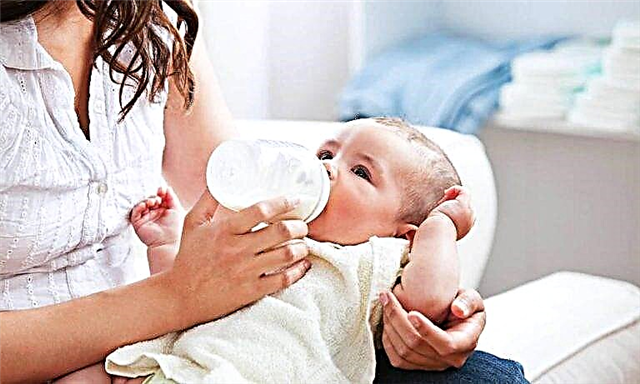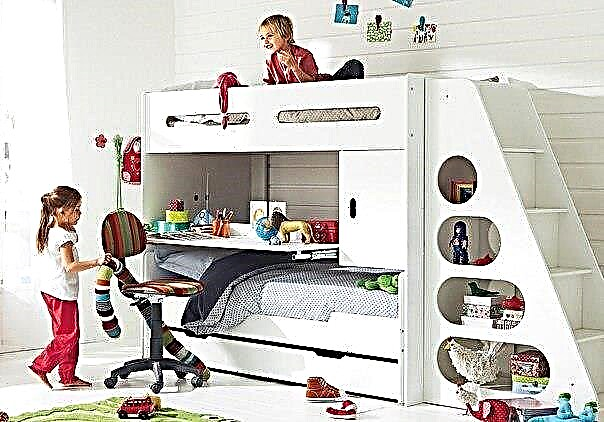Everyone has artistic abilities to one degree or another. Of course, not every person is capable of becoming a great artist or sculptor, but even a little one can express the inner psychological state.

With the help of drawing, even the smallest children can be instilled with a sense of beauty, taught to transfer emotions to paper or canvas. It is believed that among all talents, artistic giftedness is manifested before anyone else. Using their own imagination, children create images, revealing in them the meaning of events, phenomena and relationships. It is not difficult to determine the interests of the child, even his fears and worries, from the drawing. Even if the baby still speaks poorly, he can already express his “I” in creative activity.
Personal development is inextricably linked with imagination, fantasy, the ability to express their individuality. Therefore, many parents are worried about when to start developing artistic abilities in a child, how to make it so that it brings joy to the baby and positively affects his all-round development, how to understand and decipher children's drawings.
Stages of drawing

- 1-2 years. Children under three years old draw in about the same way, but by the age of two you can see how a child expresses himself with the help of a drawing. Kids are very attracted to pencils and felt-tip pens, they not only paint with them on paper and colorings, but also taste them. The drawing, as a rule, consists of spots, shapeless lines; some babies by the age of two can already draw a straight line or circle. Especially kids like paints, one-year-old children draw with them directly with their hands, older kids confidently hold brushes;
- 3 years. Drawings are gradually taking shape and expression. The kid already learns from the whole variety of kalyak-malyak where the car or the tree is drawn, even if they do not resemble the object at all. The person in his image takes shape while it is still ovals and sticks;
- 4-5 years old. By the age of four, the child will already tell you not only what is shown in the picture, but also the background of the picture. It is the plot that is characteristic of the pictures of children of this age. By the age of five, the child, as a rule, draws elements of the face, clothing, details of the objects depicted. Drawings of this age lend themselves well to psychological analysis;
- 6-7 years old. At this age, the child shows not only imagination, but also skills, applies drawing techniques. Children copy images, they can calmly take fine art lessons;
- 8 years. By the age of eight, proportions and proportionality of the depicted appear. It is especially noticeable whether the child has artistic talent.
Deciphering the drawings
It makes no sense to look for any psychological dependence in the masterpieces of the crumbs who have just learned to hold a pencil in their hand. Older children should consider the drawings and look for meaning in them.
Colors. The first, with the help of which the child expresses himself, is the color scheme. At the beginning of their creativity, kids do not mix colors, so you can pay attention to the most frequently used color.
Dark pictures can indicate the presence of fears, depression. At the same time, the child can highlight the most important object for himself with dark color. This is especially noticeable when coloring. Or the child liked the new color, or its name.
Brown may indicate anxiety.
Bright colors (orange, yellow) are signs of good spirits. Red can signal the presence of aggression, or excitability of the child, and it is also the color of openness and activity.
Blue colors indicate self-examination, focus on the inner world, and green colors indicate that the child is bored.
Purple is the color of dreamers.
Of course, the psychology of a child is not an easy subject for research, so do not be scared or upset, one drawing cannot be used to judge the development of the baby's psyche, follow the trends in dynamics, take into account the factors of banal interest, broken pencils, mood changes or the absence of any color in palette.
Family. Observe how the kid draws a family. Whom he draws first is the authority for the child. The most beloved person is usually larger than the rest, or better drawn, with all the little things. If all family members are drawn in small, it may mean that the baby has problems with self-esteem. Free space between parents and the baby is also a sign of closeness, the larger the space, the further the baby feels from this person. It is especially pleasant when all relatives hold hands, this is an indicator that the baby feels family ties.

Think about it, if someone is not in the picture at all, perhaps the child has communication problems with this family member, he is afraid and shunned. And if in the drawing the baby has not depicted himself, then he considers himself superfluous and unnecessary.
A self-portrait can say a lot. If the baby painted himself of the same height with the others, or taller, it means that he feels confidence, his own significance. A well-drawn face, arms not crossed and not tucked into pockets, legs wide apart are an indicator of self-confidence and personal safety. If your child draws ears, it means that he can listen, and your fame is not an empty phrase for him. If the baby depicts teeth, an open mouth, this may indicate anxiety and a desire to protect himself.
House. A house drawn by him will help to understand the psychology of a child. If the house in the picture is large, with large windows and doors, then the baby is open, cheerful. If the house has no windows and doors, this is evidence of the child's isolation. On the contrary, a very large number of them signals that the child is eager to communicate. Curtains hanging on the windows, shaded windows, shutters - complexes, fears.

[sc name = ”rsa”]
A staircase to nowhere, or leading to a dead end - conflicts in the family. A roof that does not fit into the house is uncertainty. Cornices drawn far beyond the home - fears and apprehensions.
The dreamer is given out by bold roof lines, chimney, windows on the second floor of the house. And the future leader - transparent walls and furniture outside the windows.
Little man. Psychologists believe that the more detailed a child draws a person, the further he is in development in psychological terms. That is, the presence of a man's ears, feet, eyebrows, elbows, etc. indicates that your child is well developed emotionally and mentally.
You will understand much in the drawing of your child even intuitively.
Of course, when characterizing and decoding a child's drawings, many factors should be taken into account. For example, does he know at all about the structure of a person, at home, without prompting, did he draw his picture, in what mood the baby was. Do not take too seriously the "codes" of your artist, just in case of warning signs, pay attention to the baby, to his behavior, go, if necessary, to a consultation with a psychologist.
Developing abilities
The penchant and talent for drawing can be noticed when the baby is about 3-4 years old. In order to reveal talents in a child, you need to offer him different types of creativity, periodically returning to them. If you understand that your kid is inclined to drawing, he not only succeeds, but also gives pleasure to the process itself, start practicing. Be sure to purchase paints, brushes, pencils, paper.

There is no need to focus only on drawing. Imagination, abstract thinking, fantasy develops when engaging in other types of creativity. Sculpt, glue, make appliques. Draw in non-standard ways: on the water, with your finger on the rump, on glass, with a stick in the sand, etc. In everyday games, use your imagination, because original thinking, observation, non-standard outlook on things are components of harmonious creative development.

Support the child in his endeavors, creative statements and actions, do not overdo it in criticism. Do home exhibitions.
Think about courses and special schools. Go to museums, visit exhibitions, enjoy trips to nature, all this contributes to the introduction of the child to the beautiful.
Remember, your support, attention and guidance will help your child develop correctly, both psychologically and creatively.
On this topic:What does the child's drawing say



